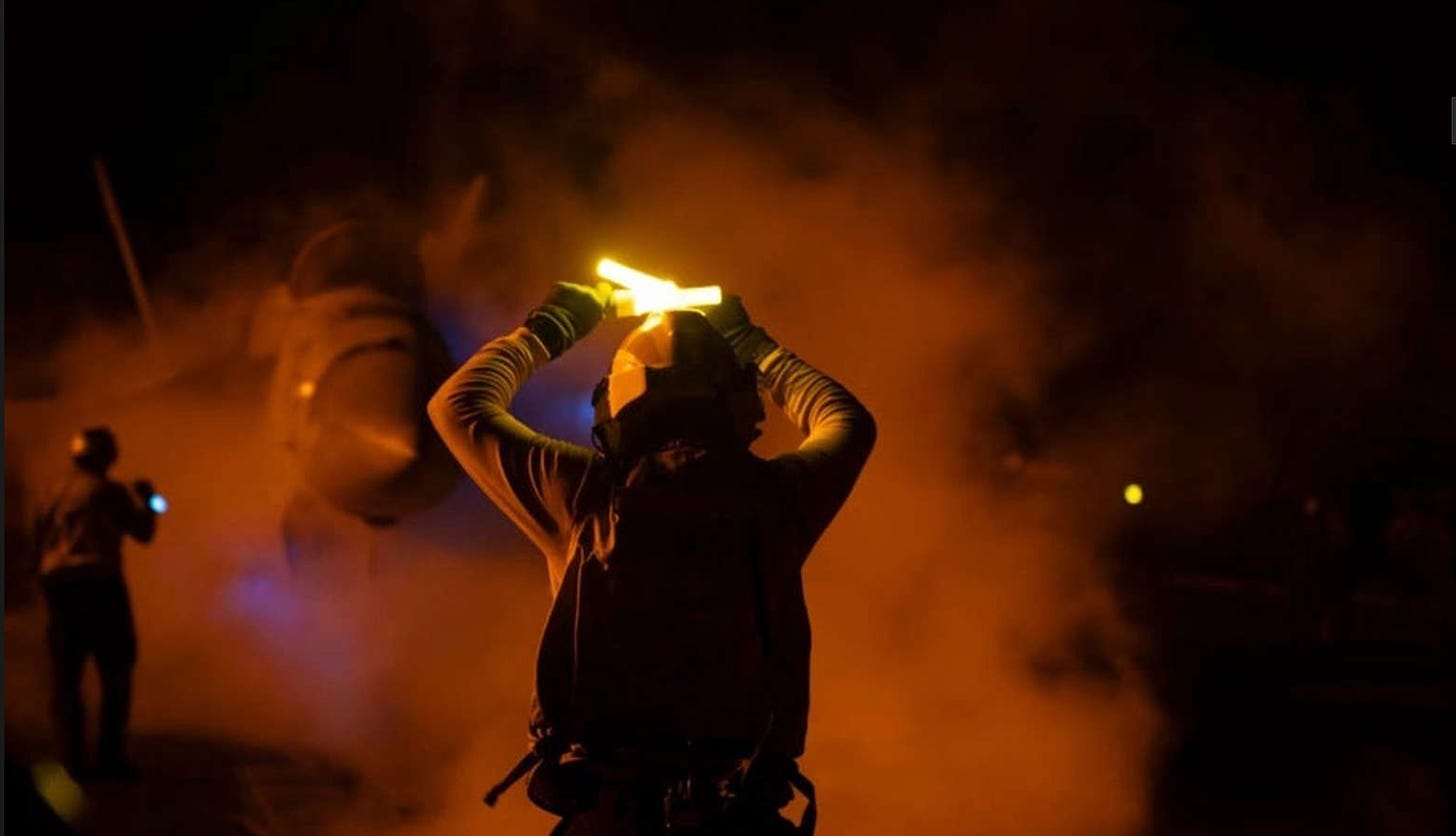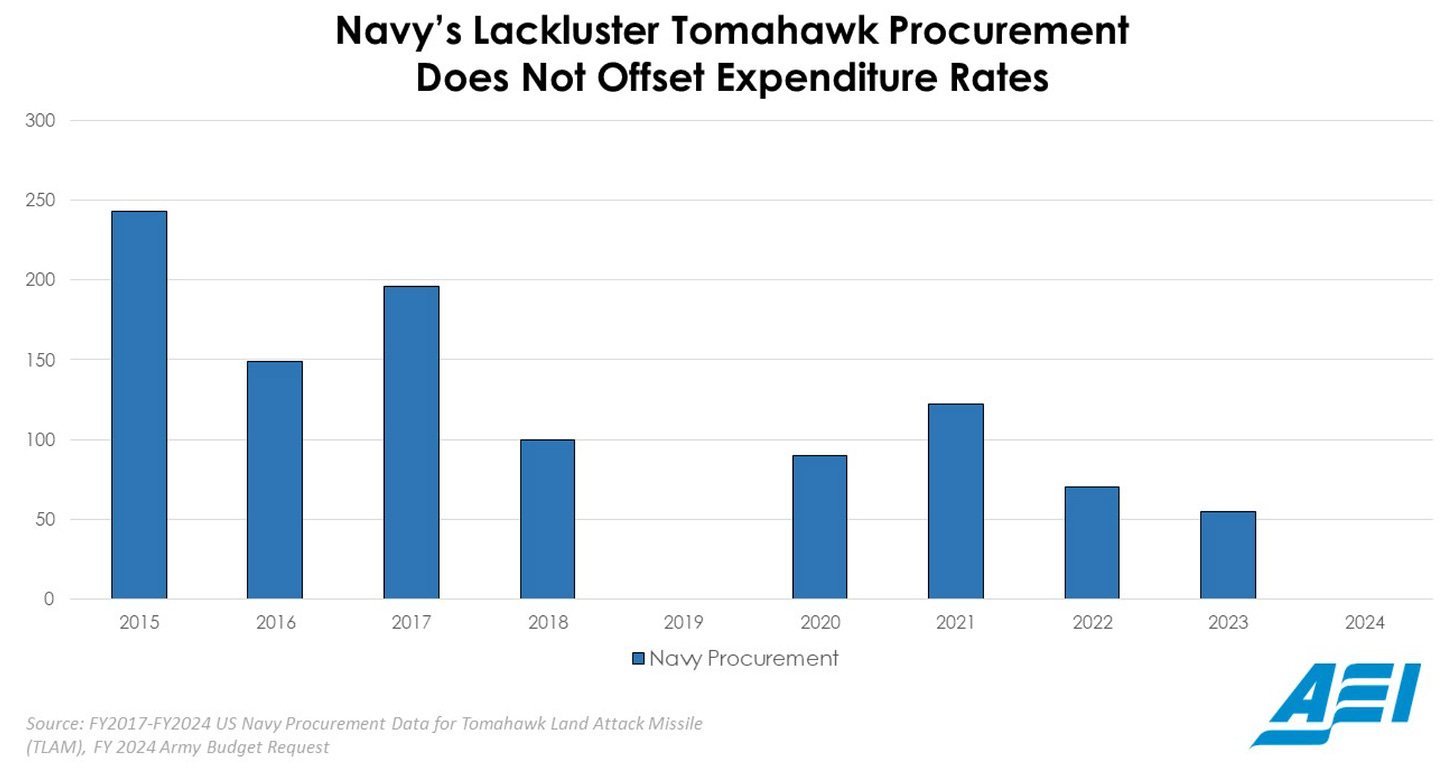We’ve been playing “unscheduled range time” with the sub-4th rate, quasi-piratical, non-state actor Houthis in the Red Sea for the last nine months or so.
You know, the United States frack’n Navy (with a little help from our friends), formerly the world’s largest navy that now - between shots of copium - still claims to be the most effective navy (which it clearly is).
Of course, a Navy is only a tool of national statecraft and like all tools, it is only useful if used correctly by those who wield it.
So, let’s look at the effort.
What have we expended in this “fight?”
The Eisenhower strike group recently returned from its deployment, but another carrier, the Truman, and additional warships are replacing it.
During its deployment, the Eisenhower strike group — consisting of the aircraft carrier Ike, several destroyers, and a cruiser — fired 770 munitions as it worked to defend merchant shipping lanes in the Red Sea and Gulf of Aden from relentless Houthi attacks. This figure is over 250 munitions higher than what Navy officials disclosed in May, representing a significant jump in just a matter of weeks.
The warships launched 155 Standard surface-to-air missiles, used to intercept missiles or drones, and 135 Tomahawk missiles, used to hit targets on land, during the deployment. US forces frequently struck Houthi facilities, sites, and weapons in Yemen.
The carrier air wing, which was attached to the Ike and included F/A-18 Super Hornet fighters and EA-18 Growler jets, released 420 air-to-surface weapons and nearly 60 air-to-air missiles. These weapons were used to intercept aerial threats, destroy targets on the surface of the water, and strike Yemen. The air wing logged over 31,400 hours of flight time across nearly 14,000 sorties during the deployment.
That was a 9-month deployment. The wear and tear on equipment and personnel is a topic we have long covered here and for now at least, we won’t plow that field again.
Let’s look at the TLAM number, 135.
On this topic, what does our friend Mackenzie Eaglen over at AEI have to tell us;
So, in essence, we’ve expended all of 2022, 2023, and part of 2021’s procurement in just nine months.
Against.
A. Sub-4th Rate. Non-state. Actor.
In theory, we are supposed to be ready to fight a Great Pacific War on the other side of the International Date Line against the world’s largest navy, in its backyard, defending their homeland that just so happens to have four times the population as our nation.
OK.
So, in addition to the other weapons outlined above - not including a bit here and there from our allies and all the other associated costs - how are we doing?
Well, the guy in charge of the operation, General Michael Kurilla, USA, the commander of United States Central Command, is being rather clear about it - emphasis mine;
As the Wall Street Journal reported on Friday, Kurilla recently sent a classified memo to Defense Secretary Lloyd Austin warning that the strategy to stop the Houthis’ disruption of shipping routes is “failing.” Kurilla pushed for a more aggressive U.S. response. The Journal quotes an official as stating that “many people found the tone of [Kurilla’s] memo to be a bit shocking,” suggesting it effectively warned that “U.S. service members will die if we continue going this way.”
…and here we are. Even though we have thousands of years of a proven record of how to deal with actors like this, we continue to do slightly less than the minimum required and expect … what exactly are we expecting here?






Meanwhile, the Israelis take action which might possibly have a result. Amazed that our "Administration" didn't immediately call for a ceasefire.
The problem is one of will. The Israelis just showed what used to be the consequences, with a punitive raid on infrastructure. At this point, re-opening the Red Sea means ground raids.